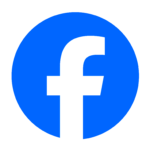Laura Jeffery is a 27-year licensed funeral director who details what she has seen in the embalming process of deceased individuals who have received the COVID-19 vaccine. She says that these are new findings in bodies since spring 2021 and has never been seen before in all her years in the industry.
View / Listen: Rumble|Apple Podcasts|Spotify|Google Podcasts|Podbean
[00:00:00]
Shawn Buckley
Ms. Jeffery, can we begin with you stating your full name for the record and then spelling your first and last name for the record?
Laura Jeffery
My name is Laura Jeffery. It’s spelled L-A-U-R-A J-E-F-F-E-R-Y.
Shawn Buckley
And do you promise to tell the truth, the whole truth, and nothing but the truth today?
Laura Jeffery
Yes, absolutely.
Shawn Buckley
Now, Ms. Jeffery, my understanding is that you are quite a senior embalmer as far as embalmers in Canada go.
Laura Jeffery
I’m the best-kept secret in embalming.
Shawn Buckley
You have been working as a funeral director, and that includes embalming, for 27 years now.
Laura Jeffery
Yes.
Shawn Buckley
I did the math and that would mean you started roughly in 1996.
Laura Jeffery
I’m an old lady.
Shawn Buckley
I started practicing law in 1995.
Laura Jeffery
Well then, you’re an older fellow too.
Shawn Buckley
So we share a long career. And for the past five years, my understanding is you would average roughly about 170?
Laura Jeffery
Yes.
Shawn Buckley
I guess I don’t know what you call it.
Laura Jeffery
I would embalm and care for 170 people that required embalming. I would care for many more that maybe we weren’t embalming, but I would care for them as well.
Shawn Buckley
Right, because if somebody is being cremated then they don’t go through an embalming.
Laura Jeffery
No, that’s not necessarily true. It doesn’t matter if you’re buried or cremated, it depends on what you’re doing beforehand.
Shawn Buckley
Okay. Now, when COVID came along, my understanding is that you were working at a place which cared for approximately 600 deceased persons a year?
Laura Jeffrey
Yes.
Shawn Buckley
And COVID hits, so we’re in, I guess March 2020. And a year and a half goes by—
Laura Jeffery
Yes.
Shawn Buckley
And you’re still with this organization that cares for roughly 600 deceased persons a year. How many deaths did you see attributed—not caused, but attributed—to COVID?
Laura Jeffery
Seven.
Shawn Buckley
And were there other comorbidities involved?
Laura Jeffery
Of course, yes. Routinely, the COVID cases that I would see would be people that had been suffering dementia for probably quite some time and living in a nursing home facility, and that’s fairly typical in the winter. We would see that with any virus or any cold maybe that was going around because those people are very vulnerable.
Shawn Buckley
Now, what did you observe about the death rate when COVID swept through this land?
Laura Jeffery
Ah, nothing. There was nothing to observe. Nothing changed.
Shawn Buckley
So nothing changed?
Laura Jeffery
Oh, well, that’s not true actually. Lockdowns created a situation where suicides and drug overdoses escalated dramatically.
Shawn Buckley
Now, what about the first lockdown?
Laura Jeffery
The first lockdown wasn’t as obvious. There may have been the odd unusual death. But, I mean, that also could have just been normal timing—because the first lockdown was the pajama party, right? The second lockdown was the problem. In the second lockdown, the escalation of suicide deaths and drug overdoses was obvious. Young people, middle-aged people.
Shawn Buckley
And as an embalmer, you’re aware of cause of death when you’re treating somebody.
Laura Jeffery
Yes. I mean, I don’t always look, but sometimes you’re very aware. You can’t miss it.
Shawn Buckley
Okay, So the suicides and drug overdoses—
Laura Jeffery
Yes.
Shawn Buckley
They’re obviously increasing in number in the second lockdown?
Laura Jeffery
Second lockdown, yeah.
Shawn Buckley
Now, my understanding is that you had a very unique experience with a nine-week period with a specific type of death. Can you share with us slowly what you witnessed and just how unusual that was?
Laura Jeffery
Okay, so in nine weeks—so one a week for nine weeks—there were middle-aged women that were well-settled in their lives mostly, who didn’t want to stay on earth anymore. So they left. By their choice and their hand. They had children, they had spouses, they had homes, but the second lockdown was too much for them. So they left. And we cared for them. And it was awful, to be honest. Like, each week, one person would do that for no reason. They had children.
So that was hard.
Shawn Buckley
These are mothers with children?
Laura Jeffery
Yeah, average people, average people. Yeah. I mean, it could have been me, right? Except that I don’t have kids. But in a general sense, yes: it was a middle-aged woman that had children ranging, I found, aged maybe 10 to 20.
[00:05:00]
And then you’re looking at that middle-aged woman, right? And she has a home and a husband and children. So that happened.
Shawn Buckley
Had you ever, in your career, seen a suicide death from that type of person before?
Laura Jeffery
No, no, no, no, no. Women don’t do that.
Shawn Buckley
So this—this just stuck out like a sore thumb?
Laura Jeffery
Mm-hmm. Everybody noticed.
Shawn Buckley
Now, my understanding is that you started seeing changes after the COVID-19 vaccines were introduced?
Laura Jeffery
Yes, yes.
Shawn Buckley
Can you tell us about that?
Laura Jeffery
It started in January 2021. At first, I was seeing an anomaly in what we would call “return.” You have to understand a little bit about embalming. In embalming we have a vat and then there’s a hose and the vat has a pump in it. And what we do is we use the human circulatory system that God gave us. So we go into that circulatory system; generally, we start at the carotid, right? That’s a major artery that goes not only to your brain but also to the top of your heart. And it pumps the fluid through. And then the return would be people’s blood that’s pumped back out through the venous system. And we open that and let it release. The concept is to put preservation in and take out what would not preserve a body long term, so that we can present a person that is reasonable to their appearance that they should be, right?
When I was seeing the return, I started to notice anomalies in what the return was. So that went on for about three or four months. And the return was more viscous. And it’s not like I hadn’t seen that before, but you didn’t see it consistently—in every single person, right? Now I’m seeing it every single person.
Shawn Buckley
You’ll have to explain to us what “more viscous” is.
Laura Jeffery
Viscous— Thicker. Darker. Sticky. And that return—well, what I call return—it’s return blood, right? So that return blood was stickier, thicker, darker. Then I started seeing the return blood would have little, little, tiny, tiny pieces of clot in it, and the clot would be like a currant jelly clot. But it’s tiny pieces, like pinhead-sized, but it was almost like polka dot coming out, right? Polka dot pattern, sticky, viscous, thicker blood, darker. And then these little pieces of clot that kind of looked like a polka dot pattern sticking to the embalming table. And of course, that goes down the drain, right? But it was just different. There was something different. I would call it maybe “dirty blood” if you want to make a sort of a basic example, right?
The blood was dirtier, and at first— I’m really conscientious, right? I notice things and I’m known for that. At first, I was sort of like, “This is weird,” but I’m an embalmer. I’m not a scientist, I’m not a doctor, right? I’m an embalmer. But I notice things and a lot of people do, and a lot of people don’t. But in retrospect, there’s an awful lot of people in my profession that are also saying the same thing. They won’t tell you that in person; they certainly wouldn’t go public like this, but that’s what they’re telling me.
Shawn Buckley
Did you see changes in persons that were dying after the vaccines were introduced?
Laura Jeffery
Yes. It was kind of horrifying—well, it is horrifying. There was an escalation of middle-aged people’s deaths, like, just average Canadian, came home from work, had dinner with the family and died suddenly at home. So that went on for maybe a good month and a half, and usually an evening call—what we call a night call. You would send a removal team out: two people because they’re going into someone’s home. Usually, a night call or a night removal would be in the middle of the night. Like it might start at one o’clock in the morning. You might get one, you might not, right?
Then there was a lengthy period of time, like many weeks, where these middle-aged people were dying kind of like, right after dinner at their house with their families present. And they weren’t being investigated. They were coming to the funeral home and I was looking at this, and I’m like, “This should be investigated because it’s an unusual death. It’s an unexpected death.” But no, no, it wasn’t investigated. It was almost like they dialed it in and brought the person into our care at the funeral home. And then didn’t worry about them.
Shawn Buckley
So there are a couple of things there. You were telling us that typically a call is around 1 a.m. or after 1 a.m.
[00:10:00]
Laura Jeffery
Yeah—like middle of the night. If you’re going to have a night call happen, for some reason it always seems to be that one o’clock in the morning kind of time frame.
Shawn Buckley
And prior to the vaccines, roughly how many would calls would you guys have on a night?
Laura Jeffery
You could get one in an evening, you could get two, you could get none. And then for a while there, it was every night; one, two, even maybe three, always completed before 11 o’clock at night. My removal staff were loving that because they weren’t getting called out of bed, right? Yeah, they thought that was marvelous. And I was saying, “Why can’t you see the pattern?”
Everything’s a pattern. Like, we’re not really all that different. None of us are. We think we are, but we’re not. When we die, or when we breathe, or when we’re born, there’s patterns. And as soon as you see an anomaly in a pattern, you should be going “Why is there an anomaly?” But nobody was asking, “Why is there an anomaly?” And then—I’m a funeral director and it’s not my job to ask, “Why is there an anomaly?” But I was asking, “Why is there an anomaly?” in my mind.
I started asking my co-workers, “What did you see? Where were you? What was it like?” Family there, after dinner, average people, average home. It was an anomaly, a big one— obvious one. But it was like everybody had blinders on. I don’t know why nobody noticed. But I noticed. I was rather concerned.
Shawn Buckley
Now, my understanding is that early on you had an experience with a 47-year-old man that seemed unusual. Can you tell us about that?
Laura Jeffery
Yeah, so— Okay. You have someone that’s so healthy, you can’t miss it. Healthy. If that gentleman walked in the room right now, we would all turn our heads and say, “My goodness, what a good-looking man.” Healthy, strong, fit, tall—huge, healthy person. Gone. Right away, just— And his family told us that his death was investigated. And his family told us point blank he died from clots. That’s what they were told.
Shawn Buckley
And had you ever seen a person that age and that fitness that had died of blood clots?
Laura Jeffery
Had I ever seen that before?
Shawn Buckley
Yes.
Laura Jeffery
Heavens no. No, no—too healthy. No, no, not healthy people.
Shawn Buckley
Okay, so that’s why that sticks out in your mind as it was so unusual.
Laura Jeffery
It sticks out in a lot of people’s minds, I’m sure.
Shawn Buckley
Now did you start seeing any—basically, scarring or anything like that on shoulders?
Laura Jeffery
Yeah. For a long time, people were coming in with a little Band-Aid, right? And I kind of go, “Okay Laura, it’s just a Band-Aid, ignore it even though—” It was just unusual deaths with a Band-Aid. That’s how I’m supposed to look at it because I’m not a doctor, I’m an embalmer. But the reality is I’m looking at this and I’m going, “Yeah, there’s a little tiny Band-Aid on everybody’s shoulder.” So that tells me. I mean Band-Aids—they last, what, two or three days if you’re lucky, right? So that tells me there is a problem.
Shawn Buckley
And what were the ages of these people coming in?
Laura Jeffery
Oh, full range.
Shawn Buckley
Full range?
Laura Jeffery
Yeah. Actually, at that point— To be more clear, at that point people were— I would say it was retirement age at that point. Because I was seeing people that were like maybe 60-something, older, with the Band-Aid.
Shawn Buckley
Now, earlier you were telling us changes that you saw in the blood.
Laura Jeffery
Yes.
Shawn Buckley
You were seeing little clots and you’ve seen color changes. Was there also something else happening that you were starting to observe?
Laura Jeffery
Yeah. And that’s what everybody wants to hear about, right? So first, like you said, the viscosity changed—which means the color is going to be deeper. There’s a stickiness, it’s been termed dirty blood. There’s small micro clots in the return and the odd time there was like, a rainbow slick, right? Remember the ’80s, they had those rainbow slick dresses or oil slick dresses, I think they called them. You would see that on the odd occasion, which is really weird. And nobody can put their finger on it, that’s the weird thing.
In the spring of 2021—we’re talking April, May—so four or five months after the rollouts of the gene therapy, right?
[00:15:00]
The first time I saw it I thought it was a parasite. We have something called drainage forceps. I use a pair, generally speaking, that are about this long and that have a handle port. You can squeeze them like tweezers, right? So curved tweezers, think of them that way. I use that to pull anything out of the way on the venous side of the body, where you’re draining the return blood. And all of a sudden, I was having trouble. I couldn’t understand. Then I pulled it out and I went and I kind of— You can turn the drainage forcep and you can see what’s in it. I’m sort of like this and I see something that I thought was a tapeworm. Which was weird, because tapeworms shouldn’t be in a circulatory system. And then I’m looking at this and I’m thinking, “Is this a parasite?” Because a tapeworm’s a parasite; that looked like a parasite. And it was at that point, maybe, like three, four inches long. That’s a small one. But at that point, that was a huge one for me, because I’d never seen this before. This was a whole new anomaly.
Shawn Buckley
I just I just want to make sure. At that point you had been embalming for a quarter of a century, 25 years.
Laura Jeffery
Yeah, with a heavy focus on it.
Shawn Buckley
You had never seen anything like that in your career?
Laura Jeffery
No—absolutely not. Blood clots are sort of in a few categories. There’s currant jello blood clots, there’s chicken fat blood clots, there’s just sludging, which is thicker blood in general. And then there was this anomaly, which I thought was a parasite but it’s not.
Shawn Buckley
In what percentage? So this starts in April, May of 2021?
Laura Jeffery
Yes.
Shawn Buckley
Once you saw your first one, how common was it to see this?
Laura Jeffery
It just kept happening. It was everybody. So there was that.
Shawn Buckley
And how much of this would you find?
Laura Jeffery
Over time it got bigger. When I first started seeing it, it would be small, right? Then, when I started seeing it near the end of my time frame there, if you were to take a small side plate, like a bread plate, and put spaghetti on it and kind of heap it, that could happen. Yeah. And they were longer and longer and then the integrated jelly clots at the end of course adds to the confusion. Like, if you were thinking it was a parasite, the integrated jelly clots were always at the end.
Shawn Buckley
Can you explain what you’re talking about when you say “integrated jelly clot,” just so that the commissioners—
Laura Jeffery
Okay. Have you ever seen those erasers that you push out and they’re like a pen, but they’re a circle? They’re round, cylindrical. You think of one of those but then it maybe has a couple of little tentacles of eraser coming out the end. Then there’s a blood clot that is integrated into the end of those tentacles. It felt like it was a parasite that was feeding off a blood clot that it created in the body. When you think of a parasite, you think— Because it feeds off of something, right? Then you see the jelly clots at the end of this parasite. You see those and you think, “Are they feeding off us as humans? Out of our circulatory system?” Because they always had the currant jelly integrated at the ends. It’s something to see, let’s put it to you that way. It’s horrific.
Shawn Buckley
I’m going to show some photos now. Just so that nobody believes that you took these photos, these are photos you basically had an embalmer from elsewhere share with you. So that for the purposes of this presentation, you would be able to show us what you’re talking about.
Laura Jeffery
Yes.
Shawn Buckley
David, could you pull up this computer screen please?
Laura Jeffery
Yeah, that’s it [Exhibit TO-27].
Shawn Buckley
Am I correct that this is basically what you would be pulling out of bodies? I appreciate this isn’t an embalming that you did, but this is typical of what you would see?
Laura Jeffery
Yes, that would be. If you were thinking that I started seeing this anomaly in the spring of 2021, then I would have been seeing that closer to the end of the year. Because that’s a fairly large amount. It’s unfortunate it’s not stretched out, but you can see where the currant jelly clots are: the darker pieces that are integrated into the white fibre mass. That’s what I call them. I call them “white fibre masses,” because they are fibrous. They are stretchy kind of. And you can’t break them easily, you need to cut them, the white fibre branches.
[00:20:00]
So it’s like an exact duplicate or a cast of the inside of an arterial system.
Shawn Buckley
Just so I’m clear—
Laura Jeffery
Yes.
Shawn Buckley
And it’s clear for everyone else, where are these coming out of?
Laura Jeffery
Everywhere.
Shawn Buckley
No, no, but what part of the body?
Laura Jeffery
Everywhere, everywhere, everywhere. I had to change how I embalm because of these. I have a routine now. Well, I did, I don’t have it anymore. I don’t have to do it anymore. But I had a routine. I would go into the carotid artery, where we always start embalming on an average case. I would go into the carotid artery and I wouldn’t even try to put the cannula in, which is what comes from the pump, the vat. There’s a hose and there’s a cannula. It’s a little crooked piece. It goes into the carotid artery. I wouldn’t even try to put it in. Why would I bother? It’s plugged anyway.
I would open the carotid artery like normal. I would take a small pair of forceps and go in and pull. And I would find what I call “the fish.” I named everything because that’s, I guess, how I function. But yeah— I would pull what I call the fish. And the fish would be an exact cast of the inside of that person’s artery. It usually was approximately this long and it sits here. So if we go in here, half the fish would be towards the head and half the fish would be towards the heart. Then once you pulled the fish out, you could put the cannula in, you would start the embalming.
And what I quit doing— Quite often, we like to back-pressure the human circulatory system to allow more fluid to go into the body and go everywhere, like right to the toes, right to the fingers, right? I would instead not back-pressure. I would open the venous system fairly quickly after starting injection and start pulling return—because I would see what that picture was. That’s what I would start to see fairly quickly into the embalming. I would be looking for it because I knew it was coming. When you know something’s coming, you have to change how you care for somebody and you have to change your approach and your perspective. Embalmings that normally would take a couple of hours were now taking like three or four hours because there was a lot more work involved.
Shawn Buckley
And I just wanted to clarify. When I say, “where are these coming from?” it’s from the circulatory system.
Laura Jeffery
Yes, yes.
Shawn Buckley
Okay. So we’re looking at this one. I’m just going to pull up another one [Exhibit TO-27a].
Laura Jeffery
Yeah, that’s small compared to some of them. But you can see there that those have been washed off. You’re seeing what I call the white fibre mass because I didn’t really have a name for it. And if you were to cut those, there’s no hole in the middle, they’re solid. A lot of people were thinking that they were the lining of the circulatory system—somehow it was lining. No, no, no, no, no, it’s plugging. I mean, a technical term would be the clot, right? But I hesitate to use that because people assume it’s a blood clot. This is not a blood clot. This is something else. This is something new.
Shawn Buckley
And I’m just going to go to the next photo [TO-27c].
Laura Jeffery
Yep. Right.
Okay, so those are some skinnier ones. Because you can see that they were branchy and they were down into smaller parts of the circulatory system, so they’re closer to the capillary beds. And you can see that the fellow that took these pictures and was doing the work, he has been keeping samples. I didn’t do that, but he has. You can see that the color has changed a little bit in those ones. Because, if you look, the fluid that they’re in is a type of embalming fluid, but it’s to maintain— You can keep them long-term, samples. I think that’s maybe what he was doing there.
But if you look closely, you’ll see that the ends of those fibre masses are quite small, very tiny, tiny. And that’s because their branch is going into very tiny vessels in the human body, so they’re really small. They’re everywhere.
Shawn Buckley
Now, before COVID, I expect that there would be a certain number of autopsies done.
Laura Jeffery
Yes.
Shawn Buckley
And after COVID, I’m asking if there was a change in the number of autopsies and can you please tell us about that?
[00:25:00]
Laura Jeffery
The concept was, “Autopsies are too dangerous because there’s a virus that’s going to kill everybody, so we have to not worry about these things. We’ll do them if we absolutely have to.” But they just didn’t do them. I guess it would set the concept in people’s minds not to do them, right? So, “Oh, well, it’s pretty obvious why this person passed away. We’ll just write that on the paper.”
Shawn Buckley
Just so that I understand because you’re describing types of deaths that you hadn’t seen before—such as middle-aged people just dying after supper in front of their family, so at a different hour.
Laura Jeffery
Right.
Shawn Buckley
So these are unusual deaths. And is it your evidence that there were not autopsies being done to explain this change in pattern?
Laura Jeffery
Yes, I felt that they were kind of dialed in. We’ll just sign this piece of paper and dial it in. But again, it goes back to— It has nothing to do with each individual, right? It does—I mean each individual is very important—but there’s a broader spectrum.
It’s like, if you see an anomaly in a pattern, whose job is it to call that out? Because it’s not my job. It’s someone that’s got a much higher pay grade and much more power than I would. I’m just an embalmer, why am I here? There should be other people here.
Shawn Buckley
But you do know if a body has been autopsied or not?
Laura Jeffery
Oh, very clearly, yes.
Shawn Buckley
So you’re able to tell us about it. So actually, were there fewer autopsies done?
Laura Jeffery
Way less—yes.
But you have to put that in perspective too. If I’m talking about a change in the pattern—and that change means I’m seeing deaths that should have been investigated and they’re not being investigated—then really, there would have been an escalation in autopsies, not a decrease. So I’m seeing a decrease from the norm, but then we’re not in the normal zone because there are more deaths that should have been investigated. So now, there should have been more autopsies than previous to COVID. That’s the difference.
Shawn Buckley
Right. So basically, we were doing the exact opposite of what we should have been doing?
Laura Jeffery
Yes.
Shawn Buckley
Now, I’m wondering if you can also tell us: you saw a change concerning deaths of babies?
Laura Jeffery
Yes, I did.
Shawn Buckley
Can you tell us about that?
Laura Jeffery
Well, I was used to caring for maybe three to five babies in various stages of gestation, so the whole pregnancy. I was used to seeing three to five—maybe a month, maybe two—but quite often three to five. And then that just stopped. There weren’t any babies anymore.
Shawn Buckley
When did that stop?
Laura Jeffery
I would say February of 2021. It was wintertime.
Shawn Buckley
Now, you did get one that caught your attention coming in after the vaccinations started. Can you tell us about that?
Laura Jeffery
I don’t think I can tell you about that, I’m sorry. That’s over the line.
Shawn Buckley
That’s fair enough. Okay. But would it be fair to say that you had not seen anything like that before?
Laura Jeffery
No, I had not.
Shawn Buckley
Okay. You’re telling us basically: you’re having the normal course of events pre-vaccine, three to five babies a month?
Laura Jeffery
Yes. And then none.
Shawn Buckley
And then none. For how long were there none?
Laura Jeffery
Up until recently, so like two years almost.
Shawn Buckley
For two years, all of a sudden, you’re not receiving a single baby?
Laura Jeffery
Keeping in mind, I worked in a very large community, right? And then I have a friend who works in a very large community and he hasn’t seen any babies until recently. But then you have to remember— I have a friend who works in a very small community and he saw an escalation, a dramatic escalation. It’s like the small communities got a different memo than the big ones, how to care for babies during COVID.
Shawn Buckley
Right. Can you expand on that? I don’t understand. There’s been a change; where do you think the change—
Laura Jeffery
A social worker at the hospital would help a family that lost a baby. It wouldn’t matter how old the baby—like how far in gestation the baby was. If someone went to the hospital and a woman was having a baby and the baby didn’t live, then in larger hospitals they have a social worker to assist that family. And the social worker would spend time with the family, time with the baby, give them pictures, give them footprints, and then ask them, “Would you like us as the hospital to care for the baby or do you have a funeral home that you would like to care for the baby?” Then the social worker would liaise between the family and the funeral home so that we would care for the baby. Then that didn’t happen anymore for almost two years. But then in a smaller town where they don’t have a social worker that liaisons between the family and the funeral home— Right?
[00:30:00]
There was an escalation of small babies going through that funeral home for a period of time.
Shawn Buckley
I have a friend that works in healthcare who has reported to me in Alberta that when an expecting mother’s child has died in utero, rather than the hospital taking the child out, that they’re being now sent to abortion clinics. Have you heard of anything similar happening in Ontario?
Laura Jeffery
I’m an embalmer, not an abortionist.
Shawn Buckley
Okay. Now, my understanding is that you also saw a change in your clientele that would speak perhaps to fatigue. And I’m wondering if you can share that.
Laura Jeffery
Okay. I think I’ve told you that I’m well-known for being very conscientious and very visual. Like, I do a visual interpretation. And you can learn a lot from looking at a person’s body. They can’t talk anymore but their body does. Fingernails, hands, scars, haircut, sometimes clothing would give an indication of who a person was, right? And what I started to notice was, over time, people that I was caring for and embalming— Because I can only speak to the ones that I embalmed, but over time, you would see that fingernails that normally had been manicured were splayed, split, broken, and dirty. Toenails, same thing. The pedicure would still be there. Like the nail polish would still be there, but grown out probably about three months and not trimmed. You could see that the clothing was loose-fitting, unkempt, maybe had some food spilled on it, and not kept tidy. Hair was grown out. You could see maybe they had highlights or something and they had not maintained those. And that was during a time frame that we were open for business, so to speak, in Ontario. This was sort of a consistent thing. You would see that.
I think people just got tired. When you’re not feeling well, you get tired. I was used to seeing unkempt hair or personal care at a lower standard with people who were maybe suffering with cancer, a long-term illness, because they couldn’t do it for themselves, right? And now I was seeing it for people that were at home, not ill—you know, no illness. Not an expected death but you were just seeing that people were just unkempt. They just weren’t quite maybe what they should have been.
Shawn Buckley
And then the last area I wanted to ask you about—
Laura Jeffery
Yes.
Shawn Buckley
Do you have any thoughts on how we could have managed this situation better, but in relation to your area? I think an obvious one would be there should be more autopsies when there’s a pattern change. But are there any other thoughts that you might have?
Laura Jeffery
Well, yeah. On a professional and personal level—because I pay taxes too, like everybody else, right? Our system relies on medical care and medical personnel. If those personnel are restricted in what they can look at, what they can say, what they can surmise, what they can investigate, then we’re not being cared for. Our community isn’t being cared for. Our province isn’t being cared for. Because you’re taking the opportunity for people who are forward-thinking to do their job. So when you take the opportunity for forward-thinking people to do their job away and we’re just like monochromatic people, I guess—there’s no intellectual thought process or investigation. If you take that away, then people die.
Or did it happen because the people that should have been doing that job were afraid? Did it happen because they felt that they were duped as well? I don’t know what was going on with coroners but I would say that they should have noted the anomaly, right? And maybe they did inside themselves but I haven’t seen any reports where they’re saying, “Oh, dear, we have a problem.” And then the pathologists: Where were they? Autopsies were less but they weren’t that much less. And if that’s the case, then if the funeral director can see, then why weren’t they seeing it? Because, I mean, I was seeing these fibre masses left—for lack of a better word—left dangling out of arteries that the pathology department had cut. That’s their job. But I would have to take that out in order to embalm that person.
[00:35:00]
And they were long. They were— It’s horrific. It was absolutely horrific. I’m at the point where I don’t think I can do what I did for a year anymore because it has affected me. I can do my work—but not at that level ever again. Never. Because I don’t need the aggravation that it causes me. It’s not nice.
Shawn Buckley
Thank you. Now, those are my questions. We’ll open it up if the commissioners have any questions for you.
Laura Jeffery
Yes.
Commissioner Massie
Thank you very much for your testimony. Of course, I mean, the structure you were seeing there: it’s very difficult to know exactly what it is and how it came about. I’ve seen video on that and I’m wondering myself what it could be. You’re not aware of any people that would have tried to investigate?
Laura Jeffery
Oh, people have investigated it already; yes, of course.
Commissioner Massie
And what is it that they typically found? Because when you mention parasite, for example: to me, it means that this is not human material. It’s foreign.
Laura Jeffery
I’m not a scientist. I can’t investigate that but I can send you in the right direction to look. In my profession, there are a few people that have been quite dedicated to finding out: What is this? And of course, that’s the first thing that went through my mind, too: What is this? Because this is new. If you’re extremely curious, which you should be, then you maybe want to review what Dr. Ryan Cole, who’s a very dedicated pathologist in the U.S., has to say about that.
But it’s not for me to tell you what that is, because I don’t know. I’m an embalmer, right? I won’t tell you what he thinks it is. Look it up.
Commissioner Massie
My other question is about the timing of having these people—in terms of the COVID unfolding and the vaccine rollout and so on. Have you seen a sort of coincidence of having more of these events when the vaccination rollout was more intense? Or is it totally unrelated?
Laura Jeffery
They go hand in hand. It goes hand in hand.
Commissioner Massie
And do you see, now the vaccine has been reduced, that a lot of people are no longer taking it—
Laura Jeffery
Oh, yeah. Yeah.
Commissioner Massie
Have you seen a difference in your daily work?
Laura Jeffery
I can’t actually speak to that because I don’t embalm regularly anymore. For the past, I think we’re at nine months now, I haven’t been in that environment. So I can’t tell you, I don’t know.
Commissioner Massie
Okay, thank you.
Commissioner DiGregorio
Thank you for coming today and sharing your testimony. Bernard asked a few of my questions. But just to make sure I was listening correctly: These white fibrous masses, you had never seen them before?
Laura Jeffery
No. They don’t exist before 2021, spring of 2021.
What’s really weird is, the embalmers that I have talked to, none of us can nail down a date. Because we didn’t log it. We just went, “Huh, that’s weird” and then carried on. And then we started to go, “Huh, that’s weird” all the time, so none of us sort of logged it. I’ve had many talk to me and they’ve said, “Hey, Laura, like, when did you start seeing that?” And I said, “The best I can tell you is spring of 2021.” And they say, “Yeah, me too.”
Within the profession, specifically embalmers, there’s kind of like this curiosity of the timing of events. But when it comes to the timing of events, I’ve now spoken with Canadian directors across the country. I anticipate to be speaking to more—specifically, those that embalm. But more and more. And they won’t say it in public. I’m the only one that’ll stand up and say this in public, which is terrifying, to be honest. They’re telling me that they saw exactly what I’ve discussed today. Like, “Okay, we started seeing middle-aged people that just died suddenly and that particular anomaly. We saw babies.” We had different stories about the babies depending on the size of the community they lived in. But they saw that as well. “Yes, we saw these fibre mass.”
[00:40:00]
These fibre masses show up in the spring of 2021, but not every single embalmer will tell you that. And then there are funeral directors that don’t embalm too, right? They’re not in the prep room every day. So that put me in an unusual position within the industry.
Then there are also funeral directors that have very small funeral homes, and they do all parts of funeral service for a funeral. Those people would be more likely to express it but they live in a smaller community. They are more likely to see an escalation—because not only do they live in that community but they know those people and they love them, right? So they take it more to heart as well. They’re more conscious. It’s kind of an interesting industry that way.
Commissioner DiGregorio
Thank you. When you do an embalming do you prepare a report, or anything like that?
Laura Jeffery
Yeah. An embalming report I don’t think is mandatory per se, but a lot of funeral directors do an embalming report. It’s well-suggested— Afraid an authority might come at me now. But anyway, yes, I prepared reports and I don’t have access to those anymore.
Commissioner DiGregorio
What is the purpose of the report? Is it for—
Laura Jeffery
It’s a long-term report. If there was an issue where someone was disappointed in the effect that we created on their loved one, then the report could be looked at and there would be— Just an example. A woman had an unusual arm positioning. Well, that was her arm positioning, not what we did, right? So I marked on the report and then when there was a, “Hey, you know we weren’t really happy with how mom’s arm was,” we opened the report. There it is, there was an issue because of something that happened to her prior to our caring for her. So that’s just an example. It’s very rare for me to ever go back and look at a report—like very rare, never pretty much. They just get filed.
Commissioner DiGregorio
Just to change gears a little bit, early in your testimony you talked about an unusual nine- week period in which you saw a lot of middle-aged women who had ended their own lives.
Laura Jeffery
Yes, it was awful.
Commissioner DiGregorio
I wasn’t sure what nine-week period that was.
Laura Jeffery
Second lockdown.
Commissioner DiGregorio
Second lockdown. Okay, thank you.
Shawn Buckley
Thank you. I believe those are the questions of the commissioners. Ms. Jeffery, the National Citizens Inquiry thanks you so much for coming and attending and sharing this very important information with us.
Laura Jeffery
Okay. Can I just make a quick statement? Short, short.
Shawn Buckley
Sure.
Laura Jeffery
If you’re a funeral director or an embalmer and you’ve been concerned about this for the last two years or so, if you would like to reach out, I’ve set up a Gmail account and you’re welcome to reach out there.
I don’t know who would respond but it’s [email protected]. It’s C-O-N-C-E-R-N-E-D-F-D-S at Gmail dot com. And you know, maybe we can talk about this. Thank you.
Shawn Buckley
Thank you, Ms. Jeffery.
[00:43:35]
Final Review and Approval: Jodi Bruhn, August 16, 2023.
The evidence offered in this transcript is a true and faithful record of witness testimony given during the National Citizens Inquiry (NCI) hearings. The transcript was prepared by members of a team of volunteers using an “intelligent verbatim” transcription method.
For further information on the transcription process, method, and team, see the NCI website: https://nationalcitizensinquiry.ca/about-these-transcripts/
Summary
Laura Jeffery is a funeral director and embalmer for 27 years. At the funeral home they would care for approximately 600 deceased people, A year and a half into the COVID pandemic, only seven deaths were attributed to COVID. The COVID patients she saw were usually suffering from co-morbidities (ie. Dementia).
The second lockdown, suicides and drug overdoses escalated dramatically in young and middle-aged people. In a nine week period during second lockdown, middle aged women with children age 10-20 were ending their lives at a rate of one per week.
Starting in January of 2021 anomalies were noticed during the embalming process. Blood returns were more viscous, darker, sticky with tiny clots. As time went on, the fibrous strings would get longer with integrated jelly clots. Normal embalming procedures had to change because the white solid fibrous masses were everywhere in the circulatory system. Autopsies were performed less, but should have been higher than normal due to the unusual deaths. Sudden deaths were rarely investigated at all.
More anomalies that were observed: Less autopsies were performed, babies dying in utero, people not as well groomed at time of death, as they would have before COVID. Pathologies have been done by Dr. Ryan Cole.






















